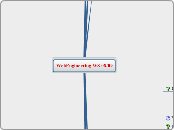av Pascal Rode för 16 årar sedan
363
WebEngineering WS 08

av Pascal Rode för 16 årar sedan
363

Mer av detta
Jackie fragt
Poster
Bewerbung Karibik
SVG
Differences?
Advantages?
PNG
JPEG
GIF
Das zugrundeliegende Problem, nämlich der Wunsch durch einen Link mehrere Ressourcen gebündelt referenzieren zu können, tritt in praktischen Anwendungen häufig auf. Beispielsweise beim Verweis auf mehrere Versionen eines Dokuments, alternativen Downloadservern oder Bildern verschiedener Auflösung.
Zu Realisierung erlaubt XLink die Bündelung von verschiedenen Verweisen zu einem einzigen erweiterten XLink. Nachfolgend ein Codeausschnitt, der dies für die Projektverwaltung zeigt.
Specification and ValidationPhases
Beyond SRS
Manage Scope
Prepare for planning
Work breakdown structure
Tree structure
Specification
Priority
Description
Name
Documenting and SRS
Assess Phase
Requirements Prioritization
by risk
by readiness
by value
Quality Attributes
Business Rules
Features
Must-solution
Product Dimensions
Assessing Requirements
Mockup
Prototype
Elicit Phase
Update Vision and Scope
Technology
Operations
UIX-Experience
RNA's Taxonomy
Navigation
Accessibility
UI-Experience
Categories of information
Mind-Maps
Techniques for Gathering
Use-Case Diagram
Example: E-Concierge
Refining Scope
Goal: Better understanding
Requires finding stakeholder representatives
Gather more information
Performing Elicitation
change control
Identify stakeholder
how
what
why
Initiate Phase
Blackboard Approach
Ein Blackboard-Modell basiert auf der Vorstellung einer Gruppe von Experten, die durch Zusammenarbeit ein Problem lösen, das sich aufgrund seiner Komplexität der Lösung durch einen einzelnen Experten entzieht
Project initiation
Memorandum of agreement
Finalisation
Preparation
Vision and Scope
Drafting the vision
Market Requirement Document
Use Case
Alistair Cockburn Classification
fully dressed
is a formal document based on a detailed template with fields for various sections
Casual
onsists of a few paragraphs of text, summarizing the use case.
Brief
consists of a few sentences summarizing the use case. It can be easily inserted in a spreadsheet cell, and allows the other columns in the spreadsheet to record priority, technical complexity, release number, and so on.
Use Case Realization
Use Case Scenario
Developing Solution Concept
Business requirements
Objective
links project in business environment
Description Documentation of Project for authorization purpose
Prepare a glossary
Prepare for RE activities
Environmental
Operational
User
Business
Example: http-URL
send resource
process
handle request
Unter-Topic
adress?
find resolver
adress resource
Open Systems Interconnection Reference Model
Service Oriented Architecture
Simple Object Access Protocol
How
w3c - iterative establishing process
workshops
Why
reusability
interoperability
understand requirements
understand processes
Web Engineering – is the application of systematic, disciplined,and quantifiable approaches to the design, production,deployment, operation, maintenance and evolution of Webbasedsoftware products. [Gaedke, 2000]
Engineering is about the systematic application of scientific knowledgein creating and building cost-effective solutions to practical problems
different definitions
history
4 disciplines
Network Engineering
Information systems
storage devices
Hypermedia
Softwareengineering
reliable
6 Document types
Consequences
Concept
WWW is...
Uniform Access
Uniform Adressing
Idea
Tim Berners-Lee at CERN
History
Atkinson
Nelson
Englebart
Bush
Anchor
Link
Node
Non-linear nodes of information
Navigate through Information Space
"hyptertext = non-sequential writing"